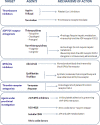Atherosclerosis, platelets and thrombosis in acute ischaemic heart disease
- PMID: 24062891
- PMCID: PMC3760546
- DOI: 10.1177/2048872612441582
Atherosclerosis, platelets and thrombosis in acute ischaemic heart disease
Abstract
Atherosclerosis is the underlying reason for nearly all causes of coronary artery disease and peripheral arterial disease and many cases of stroke. Atherosclerosis is a systemic inflammatory process characterised by the accumulation of lipids and macrophages/lymphocytes within the intima of large arteries. The deposition of these blood borne materials and the subsequent thickening of the wall often significantly compromise the residual lumen leading to ischaemic events distal to the arterial stenosis. However, these initial fatty streak lesions may also evolve into vulnerable plaques susceptible to rupture or erosion. Plaque disruption initiates both platelet adhesion and aggregation on the exposed vascular surface and the activation of the clotting cascade leading to the so-called atherothrombotic process. Yet, platelets have also been shown to be transporters of regulatory molecules (micro-RNA), to drive the inflammatory response and mediate atherosclerosis progression. Here we discuss our current understanding of the pathophysiological mechanisms involved in atherogenesis - from fatty streaks to complex and vulnerable atheromas - and highlight the molecular machinery used by platelets to regulate the atherogenic process, thrombosis and its clinical implications.
Keywords: Atherosclerosis; platelets; thrombosis; vulnerable atherosclerotic plaque.
Conflict of interest statement
None declared.
Figures






References
-
- Badimon L, Vilahur G, Padro T. Lipoproteins, platelets and atherothrombosis. Rev Esp Cardiol 2009; 62: 1161–78 - PubMed
-
- Ibanez B, Vilahur G, Badimon JJ. Plaque progression and regression in atherothrombosis. J Thromb Haemost 2007; 5 (Suppl 1): 292–99 - PubMed
-
- Tabas I, Williams KJ, Boren J. Subendothelial lipoprotein retention as the initiating process in atherosclerosis: update and therapeutic implications. Circulation 2007; 116: 1832–44 - PubMed
-
- Flood C, Gustafsson M, Pitas RE, et al. Molecular mechanism for changes in proteoglycan binding on compositional changes of the core and the surface of low-density lipoprotein-containing human apolipoprotein B100. Arterioscler Thromb Vasc Biol 2004; 24: 564–70 - PubMed
-
- Napoli C, D’Armiento FP, Mancini FP, et al. Fatty streak formation occurs in human fetal aortas and is greatly enhanced by maternal hypercholesterolemia. Intimal accumulation of low density lipoprotein and its oxidation precede monocyte recruitment into early atherosclerotic lesions. J Clin Invest 1997; 100: 2680–90 - PMC - PubMed
LinkOut - more resources
Full Text Sources
Other Literature Sources

